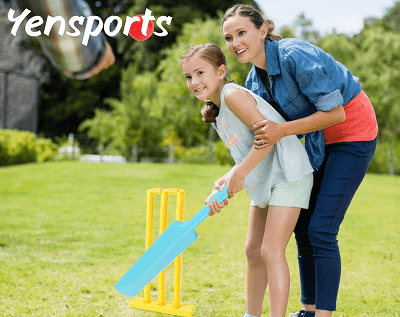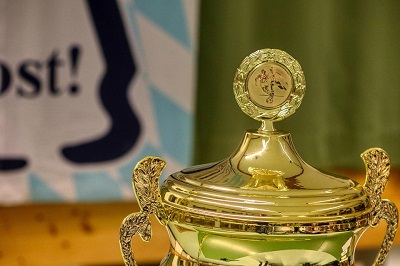Cricket: the Ultimate Guide to Kits for Younger Minds
Cricket is, for many, the most admired game on the planet by millions of children. For example, if the game is played casually in the park, as well as for league matches, cricket teams must maintain appropriate levels of safety and efficiency. This guide will tell you about the essential items that a child’s kit should have and ensure they have everything they need to play comfortably.
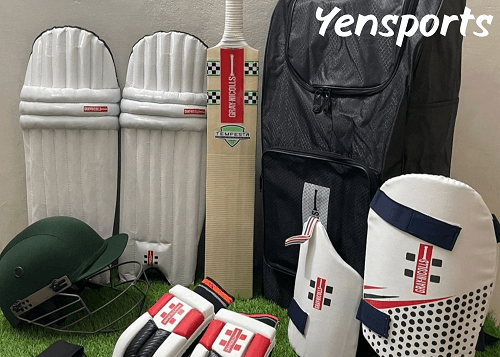
Key Cricket Kit Elements for Kids:
1. Cricket Bat:
The bat is something quite important for any player; however, when the matter is about kids, selection is a must. Bats of different sizes are available, and one needs to choose a bat according to the age, height, or skill level of the child.
- Size: Cricket bats are available in various sizes (e.g., Size 0, 1, 2, 3, 4, and 5) depending on the height of the player. A smaller bat is usually used by a younger player (under 8 years), whereas a taller or older child requires a bigger one.
- Material: Bats are primarily of English willow or Kashmir willow. The bats made of English willow are lighter in weight and provide better performance but are relatively costlier.
- Weight: The bat should not be too heavy for the child, as it may affect their ability to play effectively. Ideally, the bat should feel balanced and comfortable in their hands.
2. Cricket Ball:
A ball is a core component of a game, and for children, it should always be on their list of primary concerns; most of them use soft cricket balls, to begin with and reduce the possibility of injuries.
- Soft Balls: Softballs are suitable for small players less than 10 years old since they limit injury chances while still learning to play.
- Hard Balls: Younger children above 12 years can be started off with hard cricket balls. Hard balls are stiffer and better suited for gameplay, but the child would need more protection.
3. Protective Gear:
The most critical aspect of selecting a cricket kit for children is safety. The game can be unsafe if proper protection is not worn, particularly when facing fast deliveries.
- Helmet: The helmet is best for children players playing competitively, especially if he has to face fast bowlers. He should ensure a fitting of the helmet with the help of a chin strap and even the helmets come with additional facial guards or grills as additional safety to the faces.
- Leg Guards: leg guards protect the shin and knee from impact. Size requirement- the size of a kid’s pads should be according to his or her legs.
- Palm: Protect the hands and fingers on an impact; a better grip upon the bat is ensured.
When there is a requirement to pick, for example, some of the positions like wicketkeeper, use Fielding gloves. - Thigh Guards & Abdo Guards: These are designed to protect sensitive areas like thighs and groin from fastballs. The thigh guards are worn in front of the thigh, whereas abdo guards provide a covering for the abdominal part.
4. Clothing:
Loose and breathable clothing enables kids to move freely around when playing cricket.
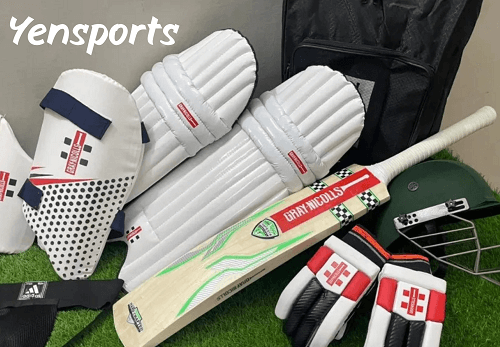
- Cricket Shirt: A sweat-wicking loose-fitting shirt keeps kids cool during the game.
- Trousers/Shorts: This depends on the weather. In case of a dry spell, trousers can be worn while in some leagues players are made to wear trousers; shorts are good for casual matches.
- Socks: Cricket socks help the player keep his feet dry and comfortable.
5. Cricket Shoes:
Good shoes for kids enable stability, speed, and comfort, which is necessary. Cricket shoes can be available in two main categories:
- Spiked shoes: These are worn by the sophisticated, who need extra friction while running on the ground since some of them are considered bowlers.
- Rubber-Soled Shoes: Generally, nonspiked shoes are preferred by very small children because they give comfortable support for general as well as training.
6. Bag:
The whole kit needs to be carried in a good cricket kit bag. A well-built spacious kit with compartments will keep things inside arranged properly. Make sure it is comfortable, especially if the child has long distances to walk to get to their practice or matches.
Five FAQs About Cricket Kits for Kids:
1. When should I buy my kid a full kit?
It is better to start buying a full kit when the child is about 7 or 8 years old, at which time he gets serious about the game. Before this, he can start with a bat and ball and some basic protective gear such as gloves and helmet required.
2. How do I select the right size of bat for my child?
Let your child stand upright with his arms down by his sides, relaxed. The bottom of the bat should touch the area on his hip. The sizing chart for cricket is available directly from the brand’s web pages, so you see different sizing charts in different brands and then evaluate the height and muscular strength of the player.
3. What’s the difference between soft balls and hard cricket balls?
Softballs are made of rubber or foam and are for little kids or newbies. It is safer and not that intimidating, especially for the young, who are just learning to play a game with some basic skills.
4. Is an expensive cricket kit necessary for children?
While expensive cricket equipment, especially those made from high-quality materials like English willow, offer better performance, they are certainly not essential for young children. Most beginners will do just fine with good quality, affordable equipment. The safety and comfort of the little players are more important to them than brands.
5. How can I make my child’s cricket kit last longer?
Clean your bat using a soft cloth to get rid of all the dust and moisture present on it. Let your kit dry up in some place that would not let moisture or high-temperature damage that equipment. Cricket shoe washing and replacing them at the correct times, especially when the soles of those shoes seem to get all worn out.
Conclusion:
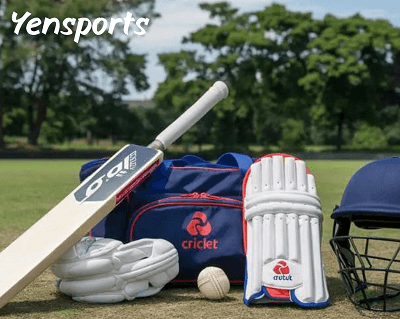
As a result, the best kids’ cricket equipment is one that focuses on safety, comfort, and suitability for the skill level. As children progress in their cricket journey, needs may change, but starting well with the right equipment will ensure they enjoy a safe game. Paying attention to key components such as the bat, ball, protective gear, and footwear will ensure that your little player gets the most out of their experience.
